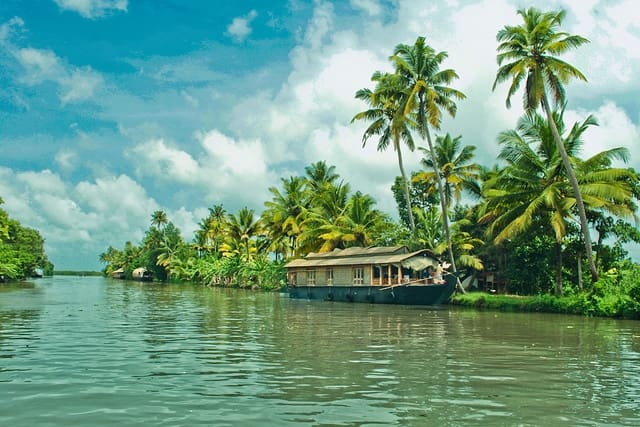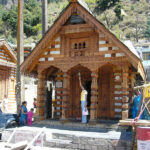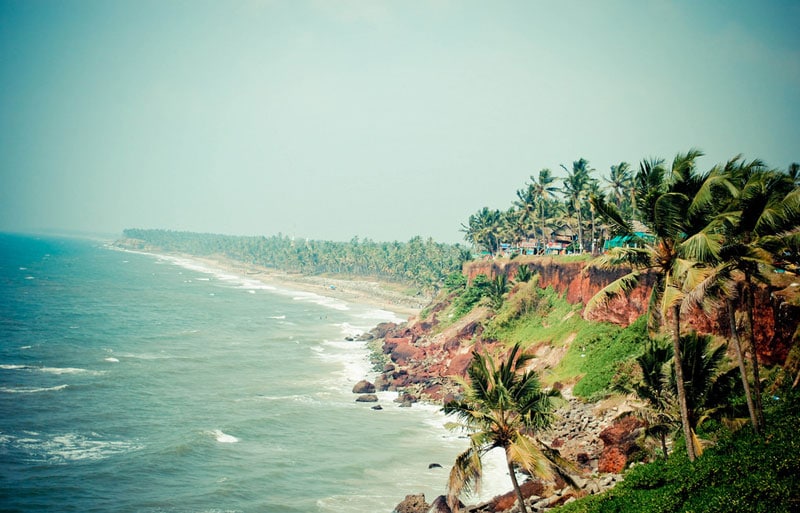Located in the heart of the picturesque town of Alleppey, the Mullakkal Bhagavathy Temple stands as a resplendent symbol of spiritual fervor, architectural grandeur, and cultural vibrancy. Revered as one of the most significant temples in Kerala, this shrine attracts devotees from far and wide, drawn by the promise of blessings, serenity, and a deep connection to Kerala’s timeless traditions.
History and Origin of Mullakkal Bhagavathy Temple
Ancient Origins and Founding Legends
The Mullakkal Bhagavathy Temple boasts a legacy that stretches back several centuries, its origins interwoven with legends and local lore. It is widely believed that the temple was established by a group of soldiers who, during a journey, carried an idol of goddess Durga in the form of a ‘Chengol’ (sacred stick). Seeking shelter under a Mullakka tree (jasmine), they experienced divine intervention, which led to the deity being installed at the very spot. This sacred event marks the birth of the revered Mullakkal Bhagavathy Kshethram.
Chronicles Through the Ages
Over generations, the temple has witnessed architectural enhancements, patronage from local rulers, and a flourishing of devotional activities. The prominence of the temple rose exponentially during the reign of the kings of Chembakassery, who undertook many renovations and fostered the temple’s role as a nucleus for communal harmony, spirituality, and social celebrations.
Architectural Grandeur: Thrilling Senses and Inspiring Awe
Kerala Style Temple Architecture
The Mullakkal Bhagavathy Temple embodies the finest elements of traditional Kerala temple architecture. The sanctum sanctorum (Sreekovil) is constructed in the distinctive Kerala style, with a tiled roof, wooden carvings, and laterite stone walls, exuding an aura of antiquity and reverence.
Sanctum Sanctorum and Outer Structures
The centerpiece—the sanctum—enshrines the idol of Mullakkal Bhagavathy, depicted in a standing posture that radiates grace and benevolence. The temple complex houses ancillary shrines dedicated to Lord Hanuman, Nagaraja (Serpent God), Ganapathy, and Subramanya, reflecting the pantheon diversity celebrated in Kerala’s temples.
The expansive courtyard, pillared corridors, and ceremonial Gopuram (entrance tower) add to the temple’s architectural splendor, seamlessly blending traditional aesthetic with practical design elements that accommodate thousands of devotees during major festivals.
The Deity: Mullakkal Bhagavathy—Goddess of Compassion and Power
Goddess Bhagavathy: Divine Manifestation
The presiding deity of the Mullakkal Temple is Goddess Rajarajeswari, affectionately called Mullakkal Amma. She is revered as the embodiment of Shakti, symbolizing motherhood, power, and protection. The idol, exquisitely crafted, is adorned with intricate jewelry, silk attire, and fragrant garlands, inspiring waves of devotion from all who stand before her.
Other Deities in the Temple
In addition to the principal deity, the temple complex houses shrines for:
-
Lord Hanuman (Anjaneya)
-
Nagaraja (Serpent God)
-
Lord Ganapathy (Ganesha)
-
Lord Subramanya (Murugan)
These sanctums serve as spiritual beacons for devotees, offering a holistic atmosphere of divine blessings.
Festivals and Rituals: Celebrating Faith and Tradition
Mullakkal Chirappu Festival: The Pinnacle of Spiritual Festivities
The highlight of the temple’s annual calendar is the Mullakkal Chirappu festival, celebrated in the Malayalam month of Vrischikam (November-December). This multi-day event is an extravagant celebration marked by elaborate rituals, cultural programs, processions, and fireworks.
Key Features of Mullakkal Chirappu:
-
Kodiyettam (Flag Hoisting): The festival commences with the ceremonial flag hoisting, signaling the arrival of festivities.
-
Annadanam: Thousands of pilgrims and devotees partake in community feasts, an act of social harmony and charity.
-
Processions: The caparisoned elephants, traditional music, and the vibrant pageantry present an awe-inspiring sight.
-
Vela and Panchavadyam: Traditional percussion ensembles punctuate the air with energetic rhythms, enhancing the festive spirit.
-
Theppam (Floating Festival): The grand culmination sees the deity taken out in a spectacular Theppam procession, epitomizing the unity of land and water.
Other Rituals and Daily Worship
The daily worship rituals at the temple are performed with meticulous precision:
-
Nirmalya Darshanam (pre-dawn worship)
-
Usha Pooja (morning)
-
Ucha Pooja (noon)
-
Deeparadhana (evening lamp worship)
Special poojas are conducted during Navaratri, Ramayana Masam, and Mandala season, drawing devotees from all over Kerala and beyond.
Cultural and Social Significance
A Center for Social Integration
The Mullakkal Bhagavathy Temple is not just a spiritual epicenter; it is a nucleus for communal integration, charity, and cultural renaissance. The annual festival, in particular, sees participation across caste and community divides, reaffirming the temple’s role as a unifier in society.
Women’s Empowerment and Participation
The temple is renowned for empowering women devotees. Traditions such as the women-only ‘Kudamattam’ and ‘Nirapara’ rituals highlight the importance of women in religious and social activities, symbolizing the goddess’s maternal qualities and the homage paid by generations of women.
Location and Accessibility: Finding Your Way to Mullakkal Bhagavathy Temple
Prime Location in Alleppey
Situated in the bustling Mullakkal area of Alappuzha (Alleppey), the temple enjoys a strategic location with convenient access by road, rail, and water transport. Located approximately 1.5km from the Alappuzha Railway Station and 4km from the KSRTC bus stand, visitors will find numerous transport facilities that make their journey seamless.
Nearby Attractions
A pilgrimage to the Mullakkal Bhagavathy Temple offers the perfect opportunity to explore Alleppey’s nearby landmarks:
-
Alappuzha Beach
-
Backwaters of Kerala
-
Vembanad Lake
-
Ambalapuzha Sree Krishna Temple
-
Punnamada Lake (famed for the Nehru Trophy Boat Race)
Legend and Mythology Surrounding Mullakkal Bhagavathy
Intriguing Myths
The temple’s founding legend is woven with tales of valor and miracles. It is believed that the deity herself chose the site, bestowing a sense of celestial significance on the location. Numerous stories abound regarding miraculous healings, divine interventions, and mystical occurrences, reinforcing the temple’s aura of power and beneficence.
Symbol of Resilience
During invasions and societal upheavals, the temple grew to symbolize resilience and hope, standing undaunted through centuries and protecting devotees in times of crisis.
Temple Management and Administration
Efficient Governance
The Mullakkal Bhagavathy Temple is administrated by a dedicated board of trustees that oversees the smooth conduct of rituals, maintenance, and community welfare programs. The temple management ensures strict adherence to traditional customs, ethical practices, and service to the community.
Charity and Social Service
A major aspect of the temple’s activities involves ‘Annadanam’ (free food distribution), educational scholarships, and support for underprivileged sections. These initiatives echo the goddess’s compassionate virtues.
Visiting the Temple: Timings, Dress Code, and Guidelines
Temple Timings
-
Morning: 5:00 AM – 11:00 AM
-
Evening: 5:00 PM – 8:00 PM
Special timings may be observed during festivals and auspicious occasions.
Dress Code
Devotees are expected to adhere to simple and modest attire, adhering to traditional Kerala customs. Men generally wear mundu or dhoti, while women wear saree or salwar-kameez. Western casuals are generally discouraged within the temple premises.
Visitor Guidelines
-
Maintain decorum and silence within sanctified areas.
-
Photography inside the sanctum is prohibited.
-
Mobile phones and electronic devices should be switched off or silenced.
How to Reach Mullakkal Bhagavathy Temple
By Air
The nearest airport is Cochin International Airport, approximately 83km away.
By Rail
Alappuzha Railway Station is just 1.5km from the temple, with frequent trains connecting to major South Indian cities.
By Road
State-run and private buses operate regular services to Alappuzha. Taxis, auto-rickshaws, and rental cars are widely available.
By Water
Alleppey is renowned for its unique backwater connectivity, and ferry services provide a scenic mode of transport.
Best Time to Visit Mullakkal Bhagavathy Temple
The ideal time to visit is during the Mullakkal Chirappu festival (November–December). The pleasant tropical climate, festive atmosphere, and bustling rituals make this period unforgettable. Early mornings and evenings are ideal for a tranquil darshan experience.
Accommodation Near Mullakkal Bhagavathy Temple
A variety of accommodation options cater to all budgets, from luxury hotels to affordable lodges and homestays. Many devotees prefer staying in the heart of Alleppey to enjoy easy access to the temple and nearby attractions.
-
Luxury Resorts
-
Mid-range Hotels
-
Budget Lodges
-
Traditional Kerala Homestays
Unique Experiences at Mullakkal Bhagavathy Temple
Nirapara and Kudamattam
Devotees offer nirapara (grains and produce in a para vessel) as a mark of gratitude. The colorful kudamattam (decorative parasol-changing) rituals during festivals symbolize a joyful surrender to the Divine Mother.
Annadanam
The temple’s annadanam is a soul-nourishing experience, with thousands partaking in simple but delicious vegetarian meals, blessed by the goddess.
Lighting Lamps
Lighting lamps and making silent prayers in the temple’s ancient ambience is a spiritual experience that connects devotees with the goddess’s nurturing presence.
The Impact of Mullakkal Bhagavathy Temple on Alleppey’s Culture
The temple is not only a spiritual center but also a cultural citadel that has shaped Alleppey’s identity. Traditional music, dance, and drama performances during festivals have nurtured local talents and preserved Kerala’s vibrant art forms.
Mullakkal Bhagavathy Temple: A Living Legacy
Steeped in legend and sustained by centuries of devotion, the Mullakkal Bhagavathy Temple continues to stand as a beacon of hope, harmony, and divine grace for millions. For devotees, travelers, and culture enthusiasts, this temple is a must-visit destination that encapsulates the essence of Kerala’s spiritual richness and cultural harmony.
FAQ
1. What is Mullakkal Bhagavathy Temple famous for?
It is renowned for its ancient tradition, vibrant Mullakkal Chirappu festival, and the powerful idol of Goddess Rajarajeswari, attracting thousands of devotees annually.
2. Who is the main deity worshipped in the Mullakkal Temple?
The main deity is Goddess Rajarajeswari (Mullakkal Amma), an embodiment of Shakti in her benevolent form.
3. What are the main festivals celebrated at the temple?
The temple’s signature festival is Mullakkal Chirappu, along with Navaratri, Mandala Pooja, and Ramayana Masam.
4. What are the temple timings?
The temple is open from 5:00 AM–11:00 AM and 5:00 PM–8:00 PM.
5. What is the history behind the Mullakkal Bhagavathy Temple?
It is believed to have been founded centuries ago under mystical circumstances, with the deity installed under a jasmine (Mullakka) tree.
6. Is Mullakkal Bhagavathy Temple accessible by public transport?
Yes, the temple is centrally located in Alleppey and easily accessible by rail, road, and water.
7. Are there any dress code requirements?
Yes, traditional attire (dhoti/mundu for men and saree/salwar-kameez for women) is recommended.
8. What rituals can devotees participate in?
Devotees can partake in daily poojas, Annadanam, and festival rituals, including Nirapara and Kudamattam.
9. Does the temple promote social service?
Yes, Annadanam (free food) and support for the needy are key aspects of the temple’s charitable activities.
10. When is the best time to visit the temple?
The best experience is during the Mullakkal Chirappu festival in November–December.






















